Osteochondrosis, as the most common disease in the spine, today occurs in people of completely different ages, although it is not long before it is considered an exclusive age-related disease.It is characterized by the occurrence of degenerative-dystrophic changes in the intervertebral disc, leading to pain and creates a prerequisite for the formation of protrusions and intervertebral hernia.The disease can affect any part of the spine, although osteochondrosis of the thoracic area is extremely rare.This causes significant difficulty with its diagnosis, as the symptoms of the disease mimick the pathology of the cardiovascular system.However, if the diagnosis is made, it is important to immediately start treatment for thoracic osteochondrosis.Otherwise, it can cause very serious complications and loss of performance.
Doctor's opinion
"Since there are many nerve endings in the intervertebral disc, any changes in its structure lead to the transmission of corresponding signals to the brain, resulting in the appearance of pain in the affected area."
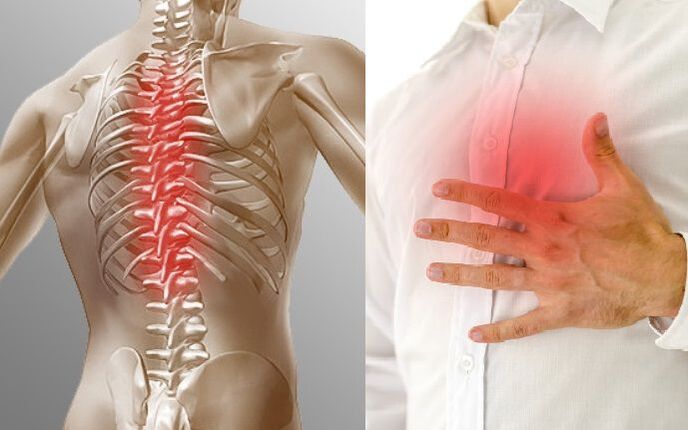
What is the thoracic osteochondrosis and the features of the treatment
Thoracic spinal osteochondrosis occurs less than 10% of the total cases diagnosed with the disease.This is due to the low mobility of the thoracic spine.But this is the main hatred of thoracic osteochondrosis, because of the symptoms in many ways reminiscent of the signs of cardiovascular system disease.Therefore, patients often turn to a cardiologist or other specialist and undergo a course of treatment that does not produce results, but eventually sees neurologists when the disease has advanced.
There are 12 vertebrae in the thoracic spine.Among them are all intervertebral discs, but more often the first and last segment of the department is affected by osteochondrosis.
In the future, the condition may be complicated by the compression of the spinal cord, which comes out at the level of each vertebra of the spinal cord and is responsible for controlling the function of the lungs, the internal organs of the abdominal cavity, and the pelvis.As a result, there will be signs of disruption in their function, as well as pain emitting to the ribs, called radicular syndrome.
In general, thoracic osteochondrosis can be clear:
- pain in the shoulder blade, which is increasing with deep inspiration;
- pain in the back of the sternum in the heart area;
- coughing, shortness of breath due to the development of bronchitis, bronchial asthma, inflammation of the lungs and other diseases of the lungs and bronchi;
- Proper hypochondrial pain, liver disorders, gall bladder and its tract, which may be due to the development of cholecystitis, metabolic disorders, and others;
- Pain in left hypochondria or shingles due to pancreatic dysfunction, leading to increased risk of diabetes;
- decreased immunity, occurring allergic reactions as a result of suppression of adrenal gland conservation;
- urinary tract disorders due to kidney damage and the addition of infectious diseases, especially pyelonephritis;
- Disruption of female and male genital organs, including infertility.
In this case, severe pain causes reflex tension in the back muscles, which causes unpleasant sensations in it and increases the risk of pinching the nerve structure.
The risk of change in the functioning of the internal organs increases significantly at the development of thoracic osteochondrosis, when intervertebral disc promotion is already observed, the formation of protrusion and intervertebral hernia.In such situations, pathological prominence will compress the nerve roots, which will cause disruption in the preservation of the corresponding internal organs and the development of their disease.
Therefore, while thoracic osteochondrosis is a relatively rare disease, it can affect the function of the whole body.Therefore, it requires the onset of comprehensive treatment.To do this, you need to contact a neurologist who will evaluate the patient's condition, review existing examination results and develop an individual treatment program.It largely depends not only on the level of thoracic osteochondrosis (there are 4 stages, the simplest is 1), but also on the nature of the manifestation of the disease, the type of disease, age and several other factors.That is why, with the right approach, the treatment of patients with the same degenerative change in the disc can have a significant difference.
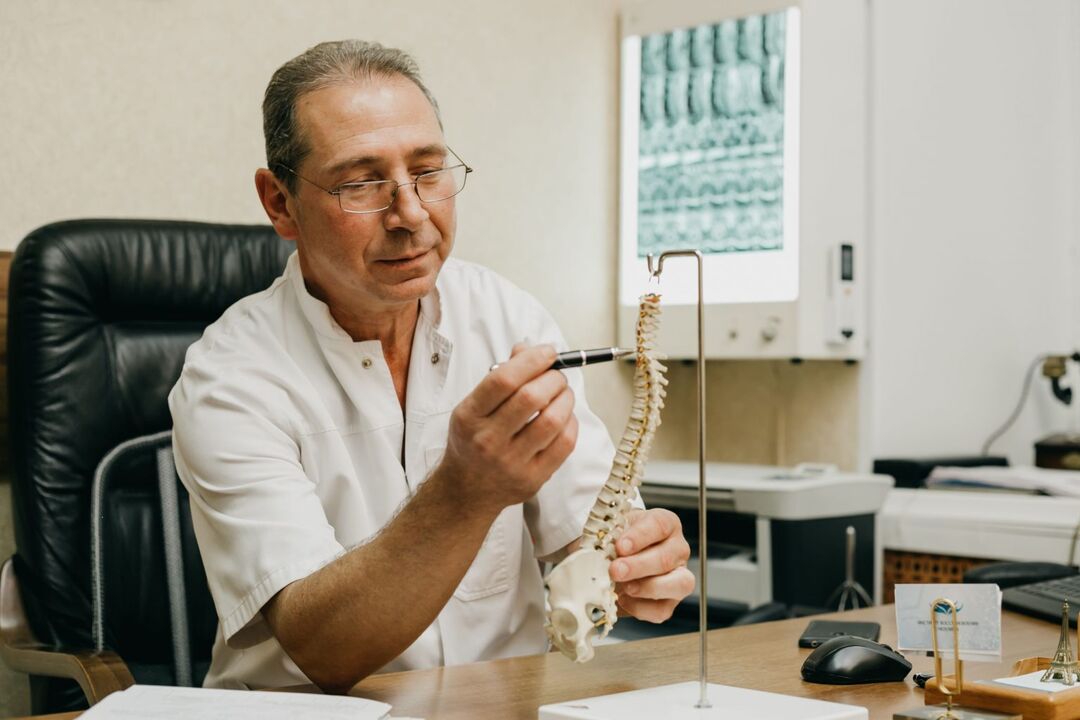
Thoracic osteochondrosis treatment is always complicated.It is intended to solve the following problems:
- Elimination of unpleasant disease symptoms, which improves the quality of life of the patient and restores full function;
- improves the quality of blood circulation in the affected area, which activates the metabolic process and will facilitate the regeneration process in the disc;
- eliminating the cause of osteochondrosis;
- Reduces the likelihood of disease complications.
For this, the patient may be prescribed:
- lifestyle correction;
- drug therapy;
- exercise therapy;
- manual therapy;
- attractiveness therapy;
- Physiotherapy treatment.
The specific methods that will be recommended to the patient are determined by the attending physician, depending on the severity of the degenerative-dystrophic change in the spine.Therefore, if thoracic osteochondrosis is diagnosed in the first stage of development, which, unfortunately, is rare, it is usually sufficient to limit yourself to make specific adjustments to your lifestyle, exercise therapy and manual therapy.
But if the disease has developed to -2 and especially the 3rd stage, additional drug therapy, attractiveness therapy, and others will surely be recommended.In addition, if osteochondrosis has created the formation of intervertebral hernia, especially large, and is accompanied by severe radical syndrome, which cannot be eliminated by conservative methods, it is possible to achieve improvement in the patient's condition only by using surgery.
Therefore, with thoracic osteochondrosis, as well as the same lesions in other parts of the spine, treatment aims to stop further development of degenerative changes in the intervertebral disc and improve the well -being of the patient.With existing wounds, especially large ones, it is not possible to achieve the recovery of cartilage tissue, not only the intervertebral disc, but also from any other joints.Therefore, let's look at the main methods of treating thoracic osteochondrosis and their features.
Lifestyle correction
After diagnosing thoracic osteochondrosis, doctors should recommend making certain changes in your normal lifestyle.If the patient shows excess signs of weight, he is advised to take steps to reduce it.But any diet for weight loss, especially monocomponent, is a contraindication.Nutrition must be complete and varied so that the body receives all the necessary ingredients for appropriate function, and the metabolic process in the intervertebral disc is continued.Therefore, it must be fully compliant with the principle of rational nutrition.
It is also recommended that all patients increase their physical activity, especially those who live an inactive lifestyle.This can be walking daily, swimming, yoga, or pilates.But serious physical activity, especially intense training on simulators, jumping sports, and weight lifting is contraindicated.

If the patient's profession involves heavy physical labor, such as lifting weights, it is recommended to try to change it.This is due to the fact that increasing the load in the presence of osteochondrosis can play a trigger role in the rapid development of degenerative changes in the disc.
True -all patients with thoracic osteochondrosis are recommended to convert mattresses to orthopedics with moderate hardness, as well as buy orthopedic pillows.This will ensure that the spinal physiological curve is maintained and will prevent further disc degeneration.
Thoracic osteochondrosis drug treatment
When treating osteochondrosis, patients are usually prescribed complex drugs.Some of them are recommended to be taken only once -ly, especially during the hunting of the disease, while others should be used in the course, the duration is selected by the doctor.
When prescribing certain medications, a neurologist must know whether the patient has the same disease and its nature.It is necessary to exclude contraindications to take certain medications.
In general, for thoracic osteochondrosis, the following group of drugs can be prescribed:
- NSAIDs;
- corticosteroids;
- muscle relaxants;
- vitamins;
- Chondroprotectors;
- products for topical use;
- means improving micro -circulation.
Nsaids
Nonsteroid anti-inflammatory drugs are one of the largest groups of drugs, as they have a large list of indications to use, including thoracic osteochondrosis.They have anti-inflammatory and analgesic properties, so they are shown to worsen the disease and the occurrence of pain.
Today, there are 4 NSAID generations, including the latest generation, the 4th is considered safest and most effective.They are distinguished by their selective action and have almost no negative effect on the mucous membranes of the stomach and duodenum.At the same time, previous drugs in this group cannot be used, especially for a long time in the presence of gastritis and stomach peptic ulcer and duodenum, as they can cause their severity.
NSAIDs are available in almost all possible dosage forms, which allow you to choose the drug according to the method of use.Therefore, in the early stages of thoracic osteochondrosis, the use of ointment, gel or cream is indicated.For worse pain, priority is given to capsules or tablets, and if there is no effect, intramuscular injection is allowed.
Corticosteroids
The drug in this group belongs to the hormone group and contains the synthetic analogs of the adrenal hormone.Therefore, they have a strong anti-inflammatory effect and are shown for severe inflammation.But due to the possibility of some negative side effects, they are usually prescribed in the form of injection solutions and only in short courses.
In addition, corticosteroids in combination with local anesthetics are used to perform paravertebral blocks.They are shown for very severe pain that prevents a person's ability to work, but can only be done in medical institutions.Blockades helps to quickly relieve severe pain and consist of introducing the solution provided into the points around the spine, in the area where the root of the spine passes.
It is recommended to perform such a procedure no more than 4 times a year.
Muscle relaxants
Muscle relaxants are a bunch of drugs designed to relieve muscle cramps.Let us remember that they often act in response to the body's reflex for pain.Therefore, the use of muscle relaxants will help reduce the severity of pain in thoracic osteochondrosis.
Vitamin
When treating thoracic osteochondrosis, a vitamin complex containing an increase in the amount of B vitamin can be prescribed.It is necessary to improve the quality of bioelectric impulses along the nerves, which is very important in cases of radical syndrome.In this way, the development of disruptions in the function of the organ -organ function is adjusted by the intervertebral disc root located at the prevented lesion.
Chondroprotectors
Chondroprotectors is a relatively new group of drugs that are actively prescribed for thoracic osteochondrosis.As active ingredients, they mostly contain true compounds -natural for the human body and are used by it for regenerating intervertebral discs and other cartilage.
But at the same time, there is still no convincing evidence of the effectiveness of the drug in this group in the form of advanced osteochondrosis, though at the beginning they work well.At the same time, the origin of chondroprotectors ensures high levels of security.
These drugs are available in many forms, including capsules, topical preparations, powders, and injection solutions.The best results are observed with the administration of the injection chondroprotector.But despite all the positive aspects of the drugs in this group, they are characterized by high costs, which, combined with the need to use it in a 30 -day or more course course, make it not accessible to everyone.
Topical products
In addition to ointments, creams and gels containing NSAIDs and chondroprotectors discussed above, the treatment of thoracic osteochondrosis may include the use of heating and local irritating agents.The principle of their actions is based on the irritation of the skin receptor at the site of the application.This leads to active blood flow to the application area, and therefore the entry of nutrients.As a result, the quality of the intervertebral disc nutrition improved, and the pain decreased.
Products to improve micro -circulation
Drugs in this group are also used to improve the quality of blood circulation and activate the metabolic process.
Exercise therapy
Therapeutic Physical Education plays one of the main roles in the treatment of thoracic osteochondrosis, as it allows:
- strengthen the muscle corset, which will ensure the creation of high quality support for the spine;
- normalizing muscle tone;
- Activate blood circulation, which improves the metabolic process in the affected intervertebral disc.
But patients should understand that the use of general training sets can have a negative effect on disease and well-being, as they do not take into account individual characteristics, levels of osteochondrosis and existing disease.Therefore, for effective treatment of thoracic osteochondrosis, it is necessary to develop individual training therapy programs.
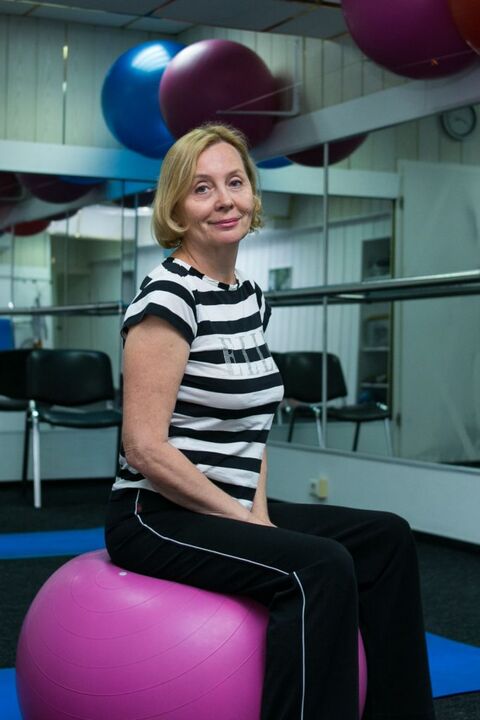
Initially, so that the patient can master the right exercise techniques, it is recommended to perform under the supervision of training therapy teachers.He will be able to calculate the load properly according to a person's physical development level and adjust his movement so that the training performed will bring maximum benefits.The program will gradually become more complicated, and once it is fully mastered, patients can practice at home.But for classes to provide good results, they should be carried out daily.
When doing all therapeutic exercises, it is important to prevent movement suddenly.
Manual therapy for thoracic osteochondrosis
One of the most effective ways to treat thoracic osteochondrosis is manual therapy, as it not only allows you to work well, but also involves affecting the spine.This is how it differs from therapeutic massage, which is also very useful for osteochondrosis, but cannot have the same effect as manual therapy, as it does not involve the spine.
But for manual therapy to bring only benefits, you should be careful when choosing a specialist to perform it, as the effects on the spine must be accurate.Otherwise, there is a high risk of complications.
Manual therapy sessions begin by wiping and relaxing muscles.The doctor works well in each back area, eliminates cramps and provides soft tissue for more active action.After that, he began to use mobilization and manipulation techniques, which can sometimes be accompanied by minor discomfort and crunching.
Manual therapy methods, which are distinguished by the use of special techniques that have proven themselves for 20 years as one of the most effective, should be of special attention.They allow not only to have a good effect on the affected intervertebral disc, but also to improve the functional quality of all internal organs, because, as stated above, they have close contact with the spine.
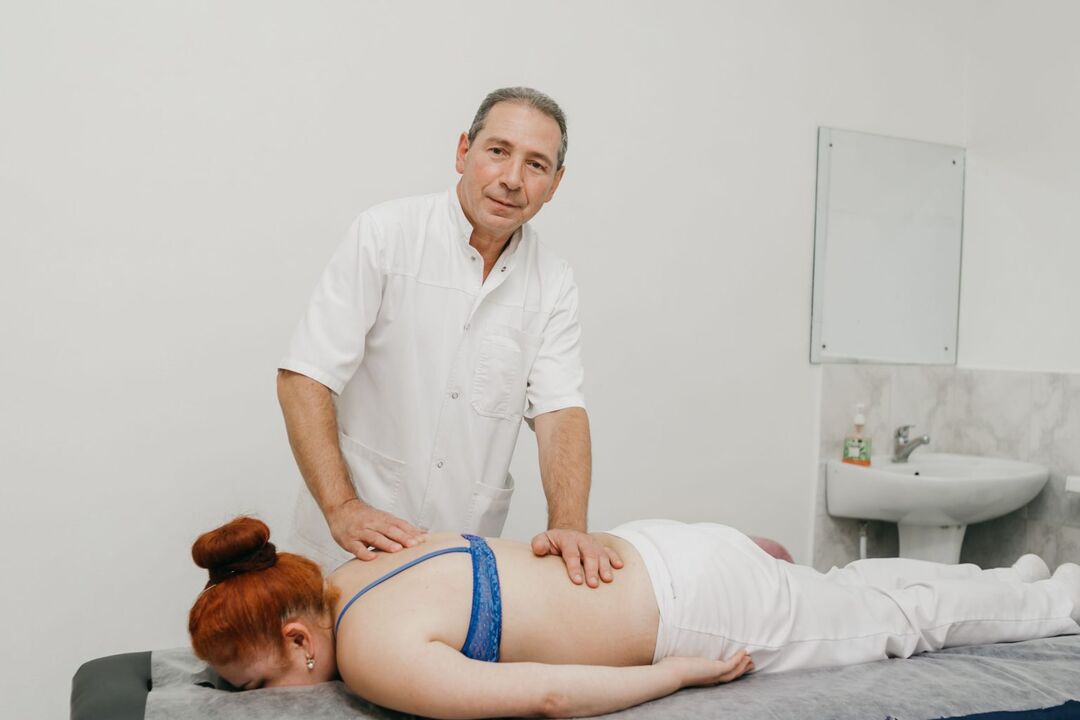
In general, manual therapy sessions provide:
- Proper recovery of the spinal anatomy with the return of the vertebra to the assigned place;
- increase the distance between the body -vertebral body, which has a beneficial effect on the intervertebral disc state by reducing the pressure imposed on it;
- normalization of muscle tone;
- the removal of the functioning block;
- improve lung function, bronchi, heart, and gastrointestinal tract;
- Increase immunity and reduce exposure to allergens.
At the same time, increased well -being after the first session.Subsequently, the patient recorded progressive reduction in pain and general conditions, performance improvement and mood.
Physiotherapy
Physiotherapy methods are widely used for the treatment of thoracic osteochondrosis after the acute level of inflammation.They can reduce the severity of the back discomfort, and also have some other positive effects on the body.
Often, for thoracic osteochondrosis, the following are prescribed:
- Electrophoresis with the introduction of drugs - this method allows deeper penetration of drug components into the tissues and increases their therapeutic effects through poor electrical current;
- Magnetotherapy is a method of physiotherapy treatment, which is based on a good effect of the magnetic field of the body, which helps stimulate blood circulation in the area of influence, leading to the activation of metabolic processes, decreased pain and swelling;
- Laser therapy is a method that allows you to achieve significant anti-inflammatory and vasodilator effects, which will also lead to an increase in intervertebral disc conditions and pain reduction;
- Ultrasound therapy is a physiotherapy procedure that provides anti-inflammatory and analgesic effects;
- Diadynamic current is a method of effective physical influence, thanks to its use there is a decrease in pain, increased metabolic rate and an increase in muscle tissue conditions.
As a rule, physiotherapy procedures are set in the course of 10-15 sessions.But each has its own contraindications, which must be taken into account when choosing a specific type of exposure.
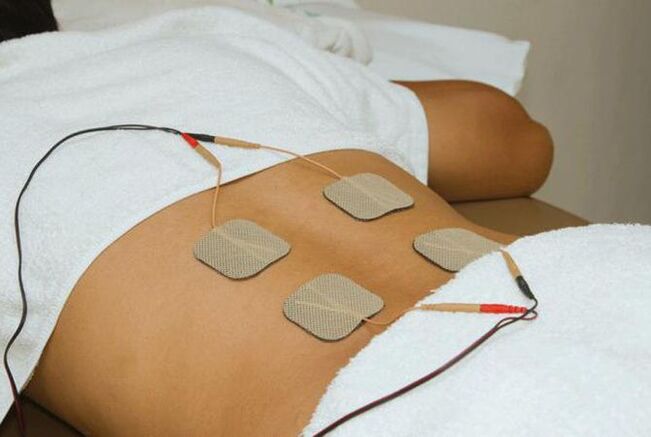
Traction therapy
Attraction therapy allows you to increase the distance between the thoracic spine, which will reduce the pressure on the intervertebral disc affected by osteochondrosis.This will stop the development of the disease and create optimal conditions for the recovery of cartilage tissue.The traction or spinal cord therapy is performed on a special table under the supervision of a medical professional.
Therefore, although thoracic osteochondrosis is not a common disease, it can reduce the quality of life of a person and lead to the development of some internal organs.At the same time, the difficulty of diagnosing it works against the patient, because without proper treatment, degenerative changes in the intervertebral disc continue to worsen.As a result, complications often develop in such situations, including the formation of protrusion and intervertebral hernia.Therefore, it is important not to ignore changes in well -being and immediately consult a doctor, and when diagnosing thoracic osteochondrosis, strictly following the recommendations received from it.



















